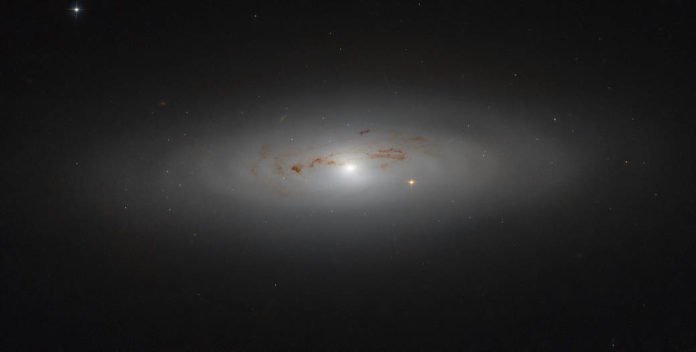This NASA/ESA Hubble Space Telescope has captured an image of galaxy NGC 4036, a lenticular galaxy some 70 million light-years away in the constellation of Ursa Major (the Great Bear).
In the Carnegie Atlas of Galaxies, it is described as being “characterized by an irregular pattern of dust lanes threaded through the disc in an ’embryonic’ spiral pattern indicating a mixed S0/Sa form. This center is encompassed by a broadened, hazy aura of gas and dust that stretches more distant into space and causes the warm, fuzzy glow that can be seen here.
The center itself is likewise fascinating; it is something known as a LINER-type (Low-Ionization Nuclear Emission-line Region) galactic nucleus, implying that it shows specific outflow lines inside its range. The particularly bright star visible slightly to the right of the galactic center is not within the galaxy itself; it sits between us and NGC 4036, adding a burst of brightness to the scene.
The image shows a tightly wound spiral pattern in the galactic disk, with three dust lanes—the southern side of the galaxy appears dimmer due to the dust configuration. Moreover, due to its relative brightness, this galaxy can be seen using an amateur telescope, making it a favorite amongst backyard astronomers and astrophotography aficionados.
